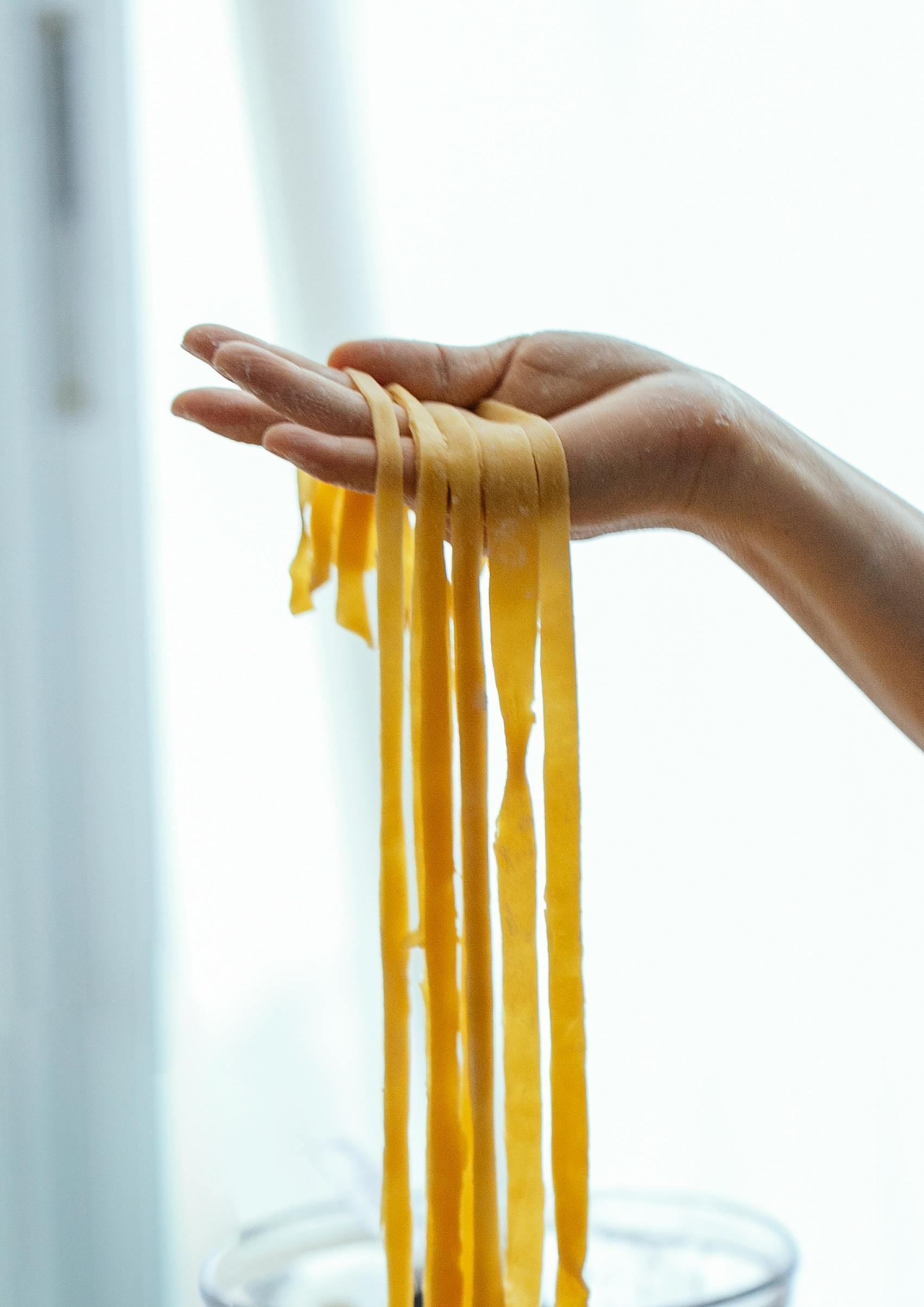There’s something magical about fresh, handmade pasta—the silky texture, the rich flavor, and the satisfaction of creating it from scratch. While store-bought pasta is convenient, mastering authentic Italian pasta at home elevates your culinary skills and brings a taste of Italy to your kitchen. Whether you’re a beginner or an experienced cook, this step-by-step guide will walk you through the process of making perfect pasta dough, shaping it into classic forms, and cooking it to al dente perfection.
The Essential Ingredients for Authentic Italian Pasta
Authentic Italian pasta relies on just a few simple ingredients, but quality matters. Here’s what you’ll need:
- 00 Flour: This finely milled Italian flour is the gold standard for pasta dough, creating a smooth, elastic texture.
- Eggs: Fresh, high-quality eggs add richness and help bind the dough. Traditional recipes often use one egg per 100 grams of flour.
- Semolina Flour (optional): For a firmer texture, especially in shapes like orecchiette or cavatelli, mix semolina with 00 flour.
- Salt: A pinch enhances the dough’s flavor.
- Olive Oil (optional): A drizzle can add extra smoothness to the dough.
Using the right ingredients ensures your pasta has the perfect balance of tenderness and bite.
Step-by-Step Guide to Making Pasta Dough
Making pasta dough is an art, but with practice, it becomes second nature. Follow these steps:
1. Measure and Mix the Ingredients
Start by mounding 300 grams of 00 flour on a clean work surface. Create a well in the center and crack in 3 large eggs. Add a pinch of salt and, if desired, a teaspoon of olive oil. Use a fork to whisk the eggs, gradually incorporating the flour from the edges.
2. Knead the Dough
Once the mixture becomes shaggy, switch to kneading by hand. Work the dough for about 10 minutes until it’s smooth, elastic, and no longer sticky. If it’s too dry, add a few drops of water; if too sticky, dust with flour.
3. Rest the Dough
Wrap the dough in plastic wrap or cover it with a bowl and let it rest at room temperature for 30 minutes. This relaxes the gluten, making it easier to roll out.
Shaping Your Pasta
Once your dough is rested, it’s time to shape it. Here are two classic methods:
Rolling and Cutting Tagliatelle
- Divide the dough into quarters. Flatten one piece with your hands and dust lightly with flour.
- Using a rolling pin or pasta machine, roll the dough into a thin sheet (about 1-2mm thick).
- Fold the sheet loosely, then slice into 1/4-inch ribbons for tagliatelle.
- Unfold the strands and dust with flour to prevent sticking.
Hand-Shaping Orecchiette
- Roll a piece of dough into a rope about 1/2-inch thick.
- Cut into small pieces, then press each piece with your thumb to create a small “ear” shape.
- Flip the pasta over your thumb to form a slight curl.
Experiment with different shapes to find your favorite!
Cooking and Serving Your Homemade Pasta
Fresh pasta cooks much faster than dried—usually in just 2-3 minutes. Follow these tips for the best results:
- Use plenty of water: A large pot of boiling, salted water prevents sticking.
- Stir gently: Stir immediately after adding pasta to keep strands separate.
- Taste for doneness: Fresh pasta is ready when it’s tender but still has a slight bite (al dente).
- Pair with the right sauce: Delicate shapes like tagliatelle pair well with creamy or light sauces, while sturdy shapes like orecchiette hold up to heartier sauces.
Finish with a drizzle of high-quality olive oil, freshly grated Parmesan, or a sprinkle of herbs for an authentic Italian touch.
Conclusion
Making authentic Italian pasta at home is a rewarding experience that connects you to centuries of culinary tradition. With just a few simple ingredients and patience, you can create restaurant-quality pasta that impresses family and friends. Whether you prefer silky tagliatelle or rustic orecchiette, mastering homemade pasta opens the door to endless delicious possibilities. So roll up your sleeves, embrace the process, and enjoy the taste of Italy in every bite.
